Explore the rich tapestry of history in Vienna
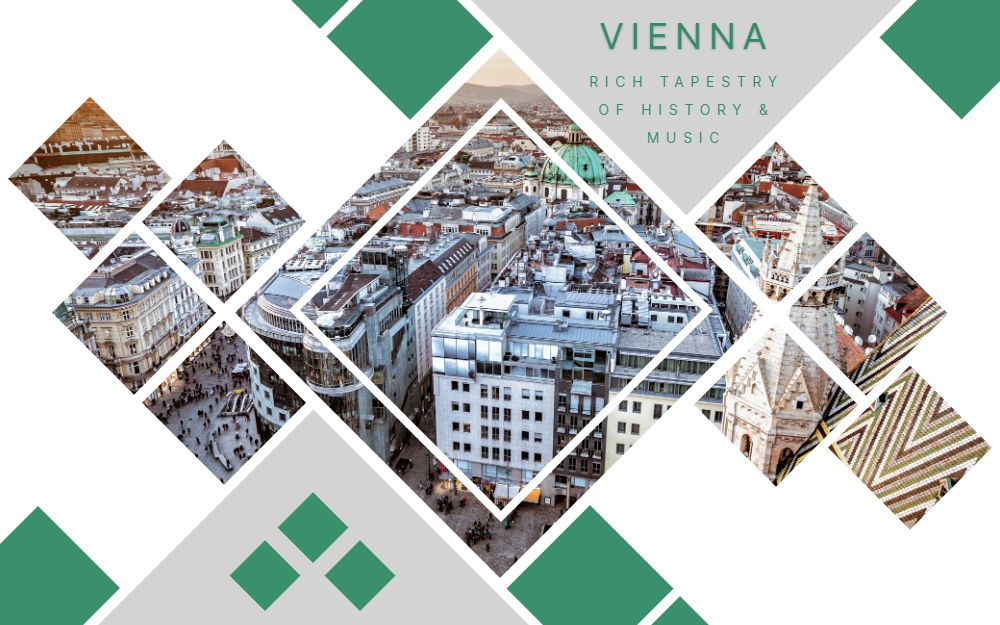
Vienna, the capital and largest city of Austria, stands as a testament to its rich history, cultural heritage, and contemporary vibrancy. Nestled along the banks of the Danube River, Vienna exudes an old-world charm with its imperial palaces, baroque architecture, and cobblestone streets.
Historical Significance:
Vienna’s history is intertwined with the grandeur of the Habsburg monarchy, and remnants of its imperial past are scattered across the city. The Hofburg Palace, once the winter residence of the Habsburgs, is a grand complex that encapsulates centuries of Austrian history. The iconic Schönbrunn Palace, a UNESCO World Heritage Site, boasts stunning gardens and opulent interiors.
Cultural Hub:
Renowned as the “City of Music,” Vienna has been home to musical legends like Mozart, Beethoven, and Strauss. The city’s cultural scene is epitomized by the Vienna State Opera, where classical performances enchant audiences. Visitors can explore the Musikverein, a concert hall renowned for its acoustics, or stroll through the MuseumsQuartier, a vibrant cultural district housing various museums and art spaces.
Artistic Splendor:
Vienna’s artistic legacy extends to its numerous museums and galleries. The Kunsthistorisches Museum showcases an extensive collection of art, including works by Rubens and Rembrandt. The Belvedere Palace houses an impressive array of Austrian art, featuring masterpieces by Gustav Klimt, including the iconic “The Kiss.”
Coffeehouse Culture:
Vienna takes pride in its coffeehouse culture, where locals and visitors alike indulge in leisurely afternoons sipping coffee and savouring delicious pastries. These coffeehouses, such as Café Central, have been gathering places for intellectuals, writers, and artists throughout history.
Green Spaces:
Amidst its urban allure, Vienna offers an abundance of green spaces. The Prater Park, with its iconic Giant Ferris Wheel, provides a tranquil escape. The Vienna Woods, on the city’s outskirts, invites nature lovers to explore picturesque landscapes.
In essence, Vienna seamlessly blends its imperial past with a dynamic present, making it a captivating destination for those seeking history, culture, and artistic splendour.
Tourist Attraction Places in Vienna
Vienna, with its rich history and cultural heritage, offers a plethora of tourist attractions that captivate visitors. Here is a list of some must-visit places in the Austrian capital:
Schönbrunn Palace: A UNESCO World Heritage Site, this opulent palace with its stunning gardens is a symbol of imperial grandeur.
Hofburg Palace: The former imperial palace of the Habsburgs, now a complex of museums and historical sites, including the Imperial Apartments and the Sisi Museum.
St. Stephen’s Cathedral (Stephansdom): The iconic Gothic cathedral is a focal point in Vienna’s cityscape, known for its intricate architecture and panoramic views from the towers.
Belvedere Palace: A Baroque masterpiece housing an impressive art collection, including works by Gustav Klimt, especially his renowned painting “The Kiss.”
Vienna State Opera: One of the world’s leading opera houses, known for its exceptional performances and elegant architecture.
Kunsthistorisches Museum (Museum of Art History): A treasure trove of art, featuring an extensive collection of European paintings, sculptures, and decorative arts.
Albertina Museum and Art Gallery: Home to an extraordinary collection of graphic art, from Dürer to modern masters, and frequently hosting temporary exhibitions.
The Prater: Vienna’s famous park, housing the iconic Giant Ferris Wheel and providing a delightful space for strolls and family outings.
Naschmarkt: Vienna’s bustling market, offering a variety of fresh produce, international delicacies, and vintage finds.
Vienna Woods (Wienerwald): A beautiful natural escape on the outskirts of the city, ideal for hiking, picnics, and exploring charming villages.
Vienna Secession Building: An architectural gem designed by Joseph Maria Olbrich, showcasing the innovative and artistic spirit of the Vienna Secession movement.
MuseumsQuartier: A cultural complex housing several museums, galleries, and art spaces, fostering Vienna’s contemporary art scene.
Rathaus (City Hall): The Neo-Gothic style city hall, a prominent landmark, especially enchanting when illuminated at night.
Hundertwasserhaus: A unique residential building designed by artist Friedensreich Hundertwasser, characterized by vibrant colours and irregular shapes.
Danube Tower (Donauturm): Offering panoramic views of the city, the Danube River, and the surrounding landscapes from its observation deck.
These attractions, among many others, contribute to Vienna’s allure as a city that seamlessly blends its imperial past with a vibrant and culturally rich present.
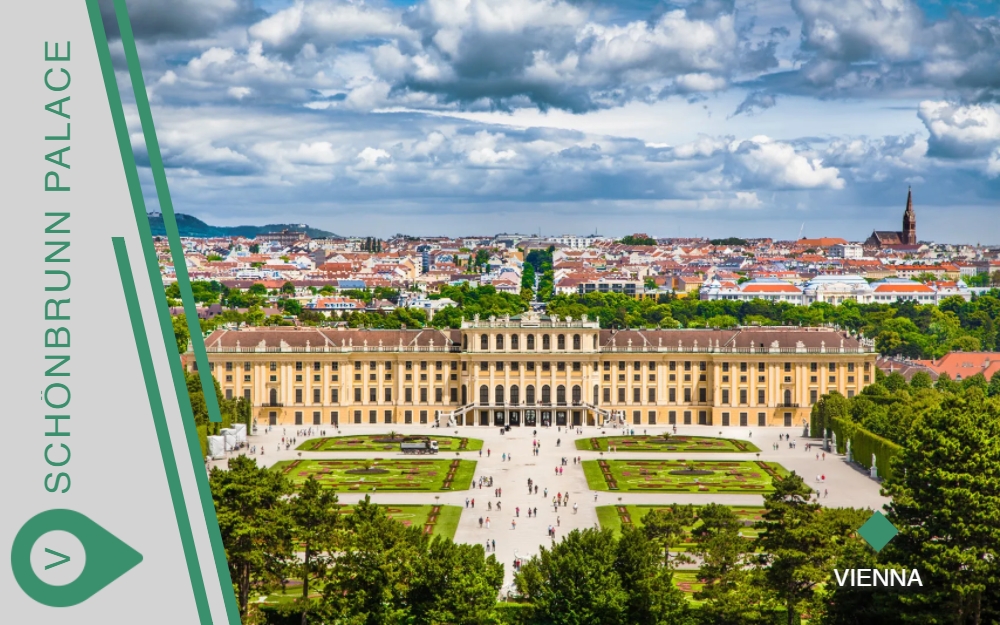
Schönbrunn Palace
Schönbrunn Palace, a UNESCO World Heritage site located in Vienna, Austria, stands as a testament to imperial grandeur and cultural history. Commissioned by Emperor Leopold I in the late 17th century, the palace served as a summer residence for the Habsburg monarchs and eventually became the residence of Empress Maria Theresa, one of the most influential rulers in European history.
The palace’s architectural splendour reflects the Baroque style, with its opulent facades, meticulously landscaped gardens, and ornate interiors. The 1,441-room palace boasts the stunning Great Gallery, where Mozart once performed for a young Marie Antoinette, and the resplendent Hall of Mirrors, reminiscent of Versailles. The surrounding gardens, designed in the French formal style, feature fountains, sculptures, and the Gloriette, a triumphal arch crowning the hilltop with panoramic views of the palace and Vienna.
Schönbrunn Palace holds a unique place in history, serving as the backdrop for key events such as the Congress of Vienna in 1814-1815. Today, it stands as a cultural hub, welcoming visitors to explore its lavishly decorated rooms, stroll through its picturesque gardens, and immerse themselves in the rich tapestry of Austria’s imperial past. A visit to Schönbrunn Palace offers a glimpse into the splendour and legacy of the Habsburg dynasty, making it a must-see destination for history and architecture enthusiasts alike.
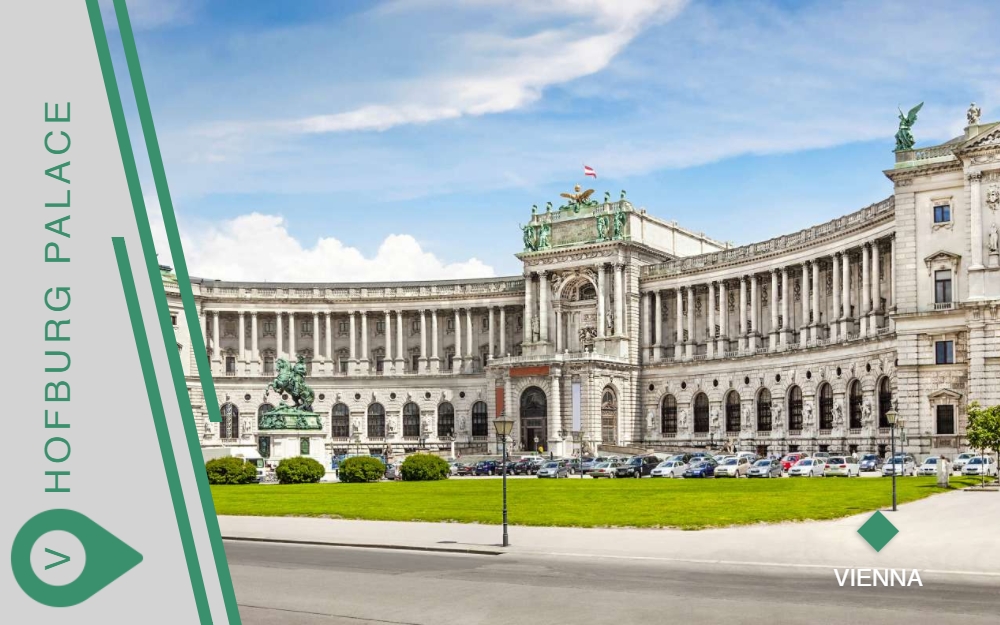
Hofburg Palace
Hofburg Palace, situated in the heart of Vienna, Austria, is a historic complex that has served as the imperial palace for the Habsburg dynasty for over six centuries. Originally built in the 13th century, the palace has undergone numerous expansions and renovations, evolving into a sprawling ensemble of architectural styles that include Gothic, Renaissance, Baroque, and Rococo.
This magnificent palace complex has witnessed the ebb and flow of European history, hosting monarchs, statesmen, and dignitaries. It was the residence of the powerful Habsburg rulers, including Emperor Franz Joseph and Empress Elisabeth (Sisi), whose legacy is still palpable within its walls. The Imperial Apartments offer a glimpse into the opulent lifestyle of the imperial family, while the Silver Collection and Sisi Museum showcase exquisite artefacts and personal items.
The Hofburg also houses the Spanish Riding School, renowned for its Lipizzaner stallions, and the Imperial Chapel, where the Vienna Boys’ Choir often performs. Additionally, the palace is home to the Austrian National Library and the Hofburg Congress Center. Today, Hofburg Palace stands as a symbol of Austria’s imperial heritage, attracting visitors with its rich history, cultural significance, and architectural grandeur.
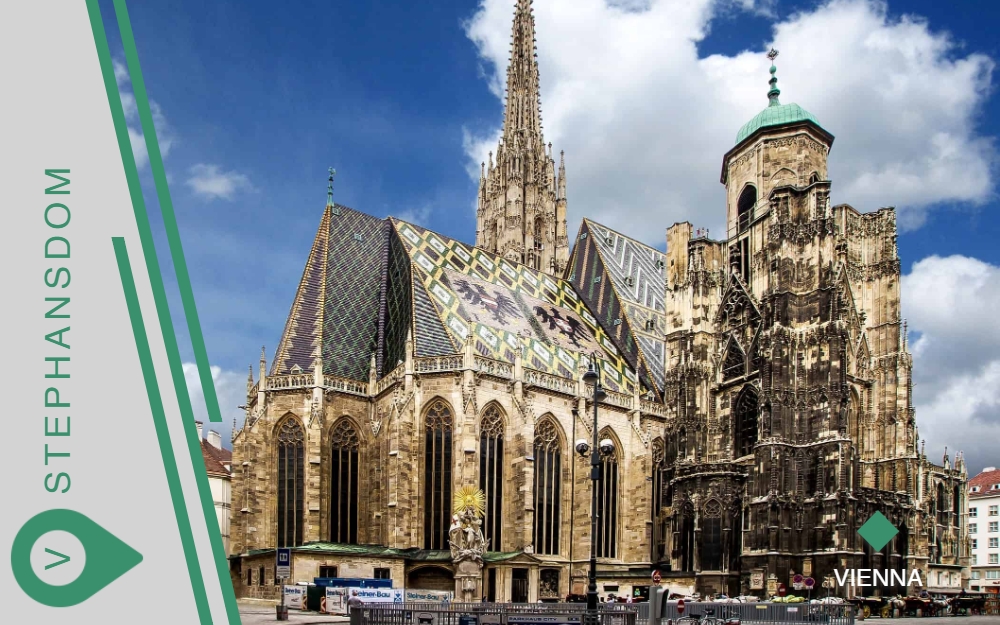
St. Stephen’s Cathedral
St. Stephen’s Cathedral, or Stephansdom, is an iconic masterpiece and the spiritual heart of Vienna, Austria. Dominating the city’s skyline with its distinctive multi-coloured tiled roof and towering South Tower, the cathedral stands as a symbol of Austrian Gothic architecture. Construction began in the 12th century, and the cathedral has witnessed centuries of history, including the Habsburg Empire’s triumphs and tribulations.
The cathedral’s intricate design features a stunning blend of Romanesque and Gothic styles, exemplified by its intricately carved portals, majestic stained glass windows, and the awe-inspiring High Altar. Visitors can climb the South Tower for panoramic views of Vienna or explore the catacombs, where the mortal remains of Habsburg dignitaries rest.
St. Stephen’s Cathedral is also home to the famous Pummerin bell, one of the largest in Europe, and the intricately designed pulpit created by Anton Pilgram. The cathedral’s interior showcases a rich collection of religious art, including the Wiener Neustädter Altar and the tomb of Emperor Frederick III.
As a symbol of Vienna’s cultural and religious heritage, St. Stephen’s Cathedral attracts millions of visitors each year, inviting them to marvel at its architectural grandeur, absorb its historical significance, and partake in the spiritual ambience that permeates its sacred spaces.

Vienna State Opera
The Vienna State Opera, or Wiener Staatsoper, is an architectural and cultural gem nestled in the heart of Vienna, Austria. Regarded as one of the world’s leading opera houses, it has a storied history dating back to its inaugural performance in 1869. The opera house’s grandeur is evident in its Neo-Renaissance façade and opulent interiors, featuring stunning crystal chandeliers, ornate décor, and plush red velvet seating.
The Vienna State Opera has been a cornerstone of classical music and opera, hosting performances by some of the most renowned composers and conductors. Its illustrious stage has seen the premieres of masterpieces by Richard Strauss, Gustav Mahler, and many others. The annual Vienna Opera Ball, held in the building, adds a touch of glamour and tradition to the city’s cultural calendar.
With a repertoire encompassing both classical and contemporary works, the opera consistently delivers world-class productions, attracting opera enthusiasts from around the globe. The Vienna State Opera is not only a venue for musical excellence but also a symbol of the city’s commitment to the arts. Its enduring legacy and commitment to artistic excellence make it a cultural treasure that continues to enchant and inspire audiences worldwide.
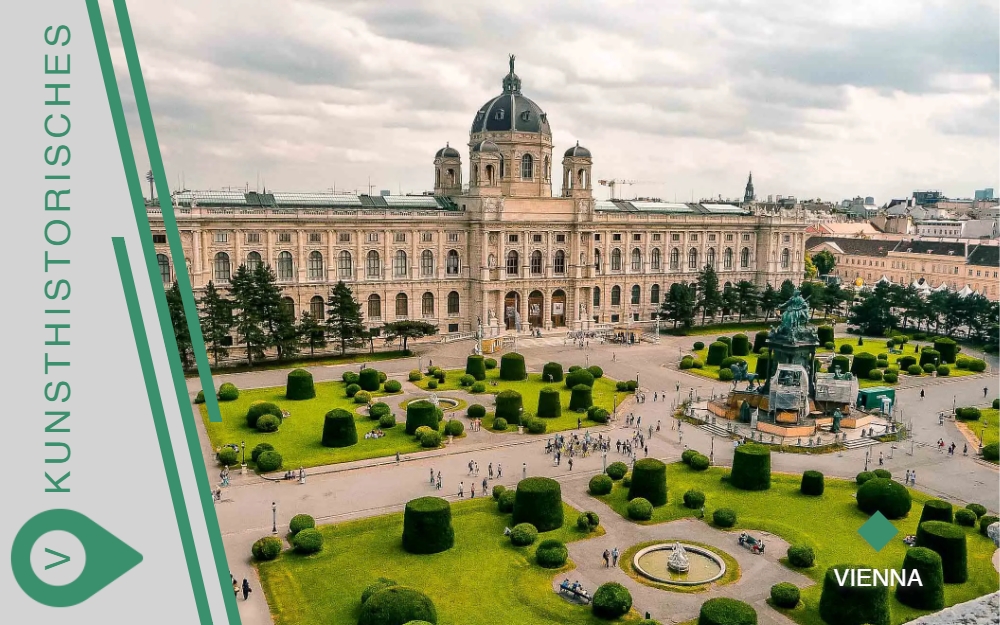
Kunsthistorisches Museum
The Kunsthistorisches Museum, or the Museum of Art History, is a majestic cultural institution situated on Vienna’s Ringstrasse. Built-in 1891 to house the extensive art collections of the Habsburgs, the museum is a testament to imperial grandeur and a hub of artistic treasures. Designed in the Italian Renaissance style, the building itself is a work of art, featuring a grand dome and ornate façade.
Within its walls, the Kunsthistorisches Museum boasts an unparalleled collection of European art spanning centuries. Visitors encounter masterpieces by artists such as Titian, Vermeer, Rubens, and Rembrandt, showcasing the breadth and depth of the Habsburgs’ artistic patronage. The Egyptian and Near Eastern Collection, as well as the Coin Cabinet, further add to the museum’s diverse offerings.
The museum’s interior is a labyrinth of richly adorned galleries, each presenting a journey through art history. The Kunstkammer, a chamber of wonders, captivates with its collection of precious objects, including intricate sculptures, scientific instruments, and curiosities from around the world.
As a cultural beacon, the Kunsthistorisches Museum stands as a testament to Vienna’s commitment to the arts, drawing art enthusiasts and scholars alike to marvel at its exceptional collections and the opulent surroundings that house them.
For more exciting news and facts, check out our website New Facts World and follow us on Instagram.



